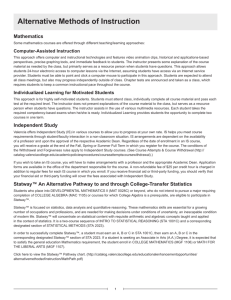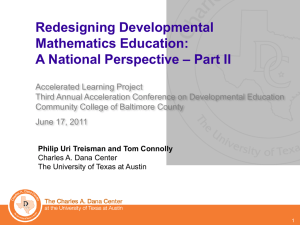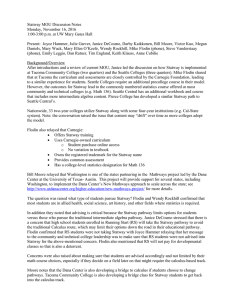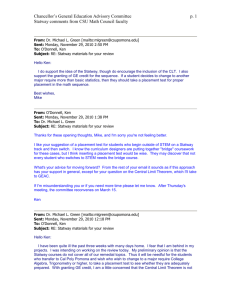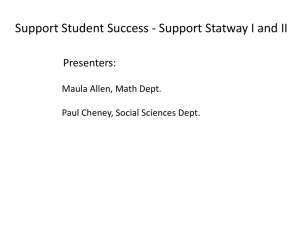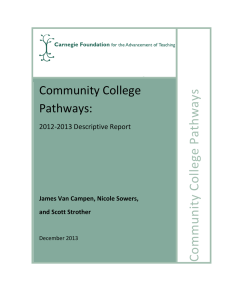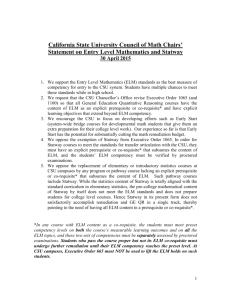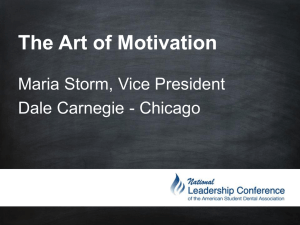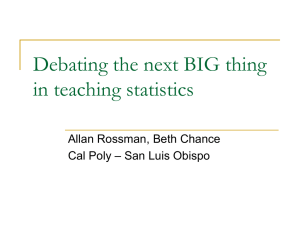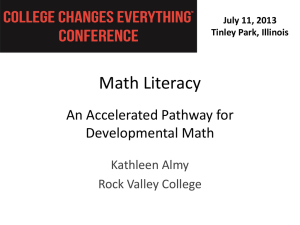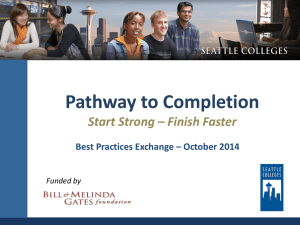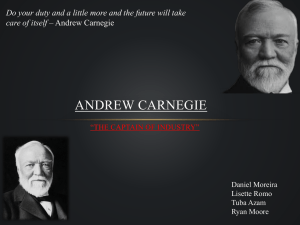Statway - Washington State Board for Community & Technical
advertisement
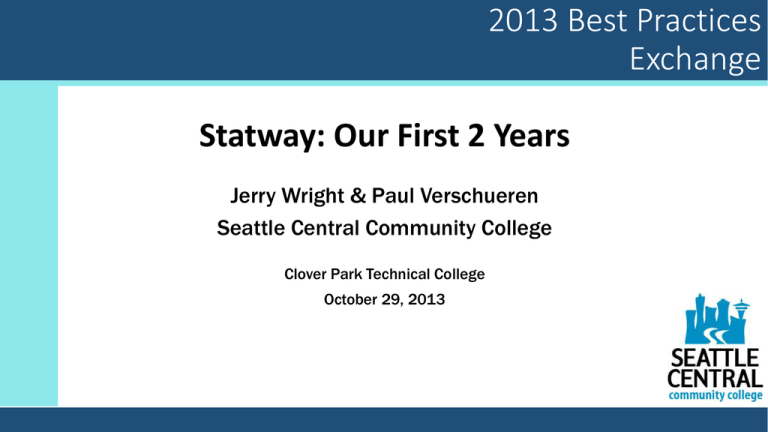
2013 Best Practices Exchange Statway: Our First 2 Years Jerry Wright & Paul Verschueren Seattle Central Community College Clover Park Technical College October 29, 2013 Today’s Agenda: • • • • • • • • • Why is Statway necessary? Who is our target audience? What is Statway? The Traditional Pathway The Statway progression Side-by-side comparison Evidence of Success Key Learnings / what’s next for us Groundwork laid / how to get involved The Problem • 75% of all students place in developmental math (pre-college math) • Many have math anxiety • Same math curriculum for all incoming students • Curriculum is mostly a repeat of high school math • Math sequence requires up to one year to complete • Most students do not finish the required math within three years • Non-STEM students taking too much time, energy and money trying to learn math content that they will never use. Math as a gatekeeper What is Statway? •Accelerated pathway that provides essential pre-college math skills in within the context of statistics •Culminates in a college statistics course •Intended for Developmental Math students (non-stem, non-business) •Cohort Model (same students, same teacher) •Developed by the Carnegie Foundation •http://www.carnegiefoundation.org Statway 10 h e ig h t (in ) Traditional y 5 75 70 65 x -10 -8 -6 -4 -2 0 2 -5 4 6 8 10 60 55 8 9 10 11 12 fo rea rm (in ) -10 Predicted height = 2.7⋅(forearm length) + 39. y 5 3 x2 yˆ 2.7 x 39 Benefits of Statway • Students with a history of failure in math get a fresh start • Topics are new to students; different from high school algebra • A non-STEM student is not necessarily any less smart than a nonSTEM student • Curriculum relevant to the future fields of our students • Cohort model give students a sense of community and support Nation-wide What we learned • Students get the “statistics” part • Students learn at a similar pace • Takes patience and understanding to get through the “math” part • “I just can’t turn letters into numbers” • Students in our SHS department lobbied for schedule-appropriate Statway section • Students recommend Statway to other students • Students with weak math skills feel empowered • Statway is more than just a new curriculum Groundwork • Carnegie Committee for Statistics Learning Outcomes (CCSLO) • All major 4-year universities in Washington State accept the Statway sequence as their intermediate algebra requirement • All outcomes in Math 146 (introductory statistics) are covered in Statway, with the same level of rigor. • Several major universities accept Statway as equivalent to their introductory statistics course (hopefully more later) Partnership with the Carnegie Foundation • Invited to participate as a founding college for the Statway initiative • Co-developed first version of the curriculum • Participated with Carnegie Mellon’s Online Learning Initiative to develop online text and activities for Statway • Several Central faculty have worked at Carnegie as directors, associates and faculty leads • Current levels of participation include • Teaching Statway and extending to South Seattle CC • Working across the district to broadly implement embedded student success = “Productive Persistence” • Hosting an “alpha-lab” on Math Anxiety with national research experts. How to get involved • Contact the Carnegie Foundation • www.carnegiefoundation.org • Bernadine Fong [fong@carnegiefoundation.org] • Form a team of interested colleagues • Email us! • Jerry Wright [jerry.wright@seattlecolleges.edu] • Paul Verschueren [Paul.Verschueren@seattlecolleges.edu] • Continue the conversation • Modify to fit your school’s needs
